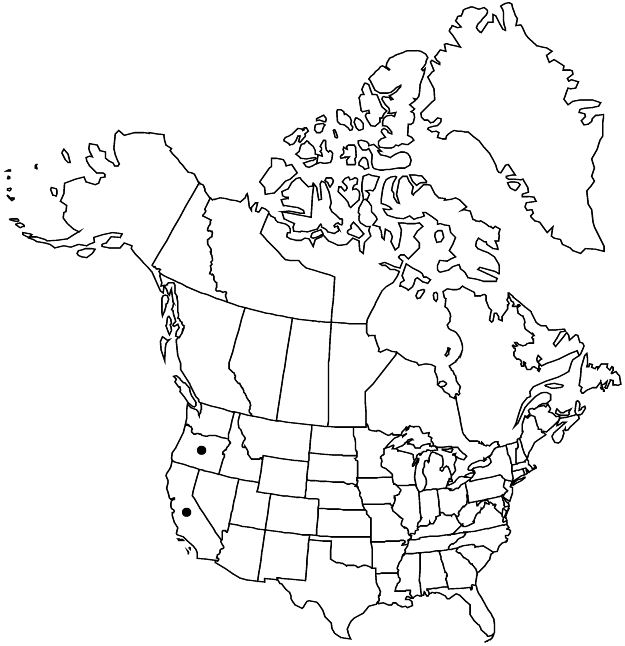Arceuthobium campylopodum subsp. monticola
Wiens & Nickrent) Nickrent, Phytoneuron 2012-51: 10. 2012.
Common names: Western white pine dwarf mistletoe
Endemic
Basionym: Arceuthobium monticola Hawksworth Wiens & Nickrent, Novon 2: 205. 1992
Revision as of 18:20, 24 September 2019 by FNA>Volume Importer
Plants forming localized infections only. Stems olive green or brown, 5–7(–10) cm; third internode 8–12(–15) × 1.5–1.7(–2) mm, dominant shoot 2–4 mm diam. at base. Staminate flowers 3 mm diam.; petals 3. Fruits 4–4.5 × 2–2.5 mm.
Phenology: Flowering Jul–Aug; fruiting Oct–Nov.
Habitat: Coniferous forests, especially with western white pine.
Elevation: 700–1900 m.
Discussion
Meiosis likely occurs in July, with fruits maturing 15 months after pollination.
The principal host of subsp. monticola is Pinus monticola; secondary to rare hosts include Picea breweriana, Pinus jeffreyi, and P. lambertiana. It is endemic to the Klamath and Siskiyou Mountains.
Selected References
None.
Lower Taxa
None.
